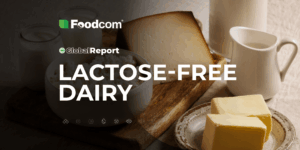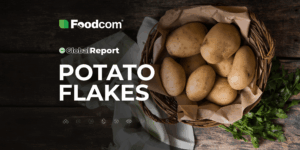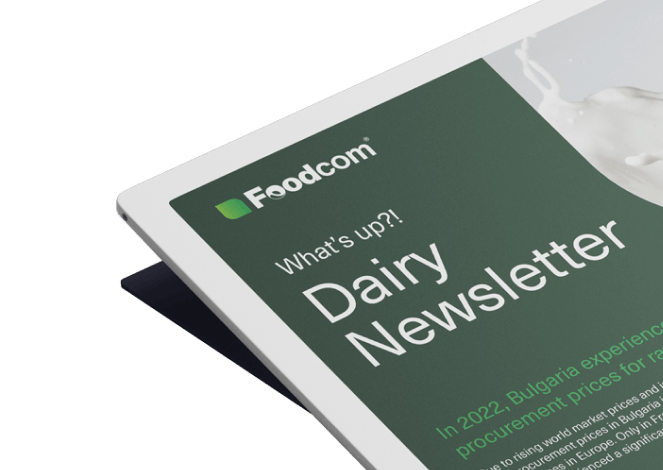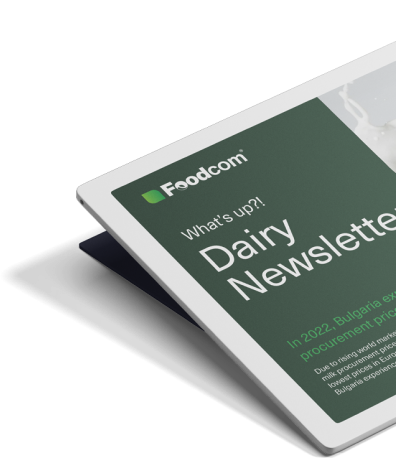- The dairy market was relatively stable in August 2025, but oversupply pressure and weaker demand from China may drive prices down in the coming months.
- Cereals remained under pressure from large harvests and stocks, which contributed to price declines in the EU but increased export competitiveness.
- The biggest source of uncertainty was the sharp rise in coffee prices and record high cocoa prices, which hit producers’ costs.
- Vegetable oils rose in price due to the situation in Malaysia and logistical constraints, while there was room for price negotiations in additives.
August brought mixed signals in the agri-commodity markets. On the one hand, we saw a slight stabilisation in the dairy sector and a clear plant-based rebound in the market data, while on the other hand, violent turmoil in the coffee market and further oversupply pressure in cereals.
This is a month that shows well how closely interconnected global supply chains are today: the US harvest, tariff policy towards Brazil or the consolidation of international players directly affect the purchasing strategies of companies in Central Europe.
Dairy products
August 2025 was a period of relative stability for the dairy market, with noticeable differences between categories. According to the FAO Dairy Price Index data in Europe, the prices of butter, cheese and whole milk powder fell, while skimmed milk powder (SMP) remained stable and whey powders recorded growth. This variation is a good indication of how sensitive the market is to changes in demand by segment.
At the cost level, forecasts of a record maize harvest in the USA were important, which could reduce feed prices in the coming months. This in turn favours milk production, but could also increase supply pressures and weaken finished product prices in the fourth quarter. The situation was further influenced by growing customs uncertainty, linked to, among other things, China’s extension of anti-subsidy proceedings against European dairy products. The market also felt the effects of a halt in dairy imports from Ukraine, following the reinstatement of tariffs and supply limits, and an additional factor undermining prices was the decline in demand from China, one of the key customers.
For European processors, this means that margins need to be proactively protected against a backdrop of possible oversupply, volatile trade barriers and weakened demand on global markets.
Cereals and starches
In August 2025, the cereal market in Europe was under pressure from high harvests and large stocks, as evidenced by FAO data, the cereal price index fell by 1.4% month-on-month and remained clearly below the level of a year ago.
Consumer wheat quotations in Western Europe fluctuated around 190-210 EUR/MT (MATIF contracts even fell temporarily to around 193 EUR/MT), while in Central Europe, including Poland, the fluctuations were wider – from around 155-235 EUR/MT. Maize remained at similar levels of 195-210 EUR/MT, supported by stable feed demand.
The surplus of wheat and barley from the new harvest exerted downward pressure on prices within the EU, but at the same time increased Europe’s competitiveness in export markets, especially in North Africa and the Middle East. In the starch segment (wheat, potato), prices remained stable, with limited international trade and pending full data from the new campaigns.
Coffee and cocoa
In August 2025, coffee was the main source of nervousness in the food market in Europe. After the US imposed 50 per cent tariffs on coffee imports from Brazil (6 August), world prices began to rise sharply. Arabica, which dominates European imports, became the most expensive .
On the exchanges, futures contracts (i.e. contracts for future coffee deliveries) rose by more than 20% month-on-month, and at their peak by as much as 30-35%. In Europe, the effect was immediate: more expensive green coffee (raw beans) meant higher costs for roasters and distributors, and this translates directly into retail prices in shops and cafés.
The cocoa market also remained tight. Prices remained at record high levels, with limited supply from West Africa. For Europe, the world’s largest chocolate producer, this means significant cost challenges. In addition, investors were eyeing talks of a takeover of French company Touton (one of the largest cocoa brokers) by investment group Hartree. If this happens, the balance of power in the raw material trade will change, with direct consequences for European chocolate producers.
In the autumn, players in the European supply chain must expect that both coffee and cocoa will remain the categories with the highest price volatility and the risk of supply disruptions will be higher than in previous years.
Vegetable oils
August 2025 saw a further increase in the price of vegetable oils, which was felt strongly by European importers and food producers. According to the FAO, the oil price index rose by 1.4% m/m inAugust , reaching its highest level in more than three years
In Malaysia, the largest palm oil producer, stocks at the end of July stood at around 2.11 million tonnes, the highest level since late 2023. On the one hand, this increases the availability of crude, but on the other hand, the government has introduced measures to support exporters (e.g. tax breaks), which keeps palm competitive in the global market.
For Europe, this means additional cost pressure, as palm oil is widely used not only in the food industry, but also in feed and biofuel production. At the same time, sunflower oil prices have been rising , a result of logistical constraints in the Black Sea region, a major source of exports for the EU.
The FAO index measures average world prices for key vegetable oils such as palm, soybean, rapeseed and sunflower. An increase in this index automatically translates into costs for European producers of margarine, mayonnaise, confectionery or animal feed.
Companies in Europe must therefore increasingly turn to flexible contracts and alternative sources of supply (e.g. rapeseed oil from Germany or France) in order to mitigate cost risks and become independent from the uncertainty of global markets.
Additives
In August 2025, the additives market did not see sharp price movements, but several clear trends are visible that are important for European importers.
In China, prices for citric acid (used in beverages, confectionery and as a preservative in the food industry) remained stable, between 4800-5000 RMB/MT. At the same time, industry reports highlight that high stocks and weak export demand are putting downward pressure on prices further. For European companies, this means opportunities for contract renegotiation and cheaper supplies in the coming months.
In India, the situation was the opposite, with the food additives market there signalling rising energy costs, which have started to translate into prices for selected substances. This is a reminder that the additives market is heavily influenced by local factors, from power and gas prices to logistics costs. Customs policy, in which there have been many recent changes, is also an important element affecting the cost of imports from outside the Union.
In other feed and food additives (e.g. amino acids or vitamins used in animal husbandry), prices have remained relatively stable, but the market remains vigilant against possible increases in shipping costs in Q4, which traditionally tend to increase during this period.
For EU buyers, this is a good time to diversify their sources of supply, i.e. not to rely only on one import destination (e.g. China), but to also look for alternatives in Europe or South America.
Summary and forecasts
August 2025 has shown that the European agri-commodities market has entered a period of high volatility. Cereals and milk remain under pressure from high supply, which favours buyers but weakens producers. The biggest risk for Europe is in coffee and cocoa, where prices are extremely volatile and costs are rising faster than in other segments. Vegetable oils are getting more expensive due to the situation in Malaysia and logistical constraints in the Black Sea, while in additives, such as citric acid, there is room for price negotiations.
According to the FAO, the global food price index in August remained virtually unchanged month-on-month, but was 6.9% higher than a year earlier, confirming continued cost pressures.
For autumn 2025, companies in Europe should prepare more flexible purchasing strategies. It will be key to secure contracts in categories exposed to further price increases (coffee, oils), while taking advantage of negotiating opportunities where the market shows signs of stabilising or declining (additives, cereals). Weather conditions at harvest and the development of global trade policy, factors that could change the picture of the entire market in the short term, will be of great importance.
![Monthly overview of the agricultural commodities market [August] Monthly overview of the agricultural commodities market [August]](https://foodcom.pl/wp-content/uploads/2025/09/monthly-agro-commodities-august.png)
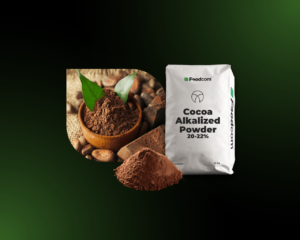

![Analiza rynku MSM w 2025 [Global Report] Analiza rynku MSM w 2025 [Global Report]](https://foodcom.pl/wp-content/uploads/2025/08/global-report-msm-300x150.png)
